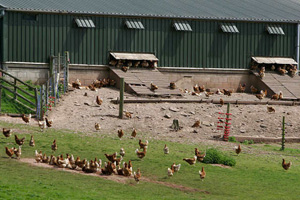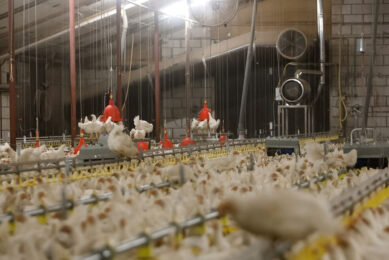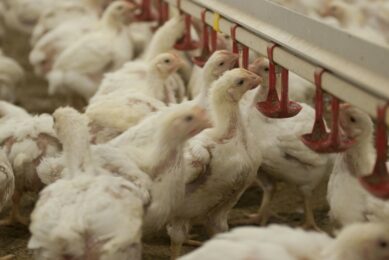FDA offers guidance on eggs from free-range hens

Proposed guidance released by the US Food and Drugs Administration (FDA) suggests the use of measures such as high walls and netting to limit Salmonella Enteritidis (SE) contamination of eggs from hens that have access to the outdoors.
The FDA said the guidance outlines “practical and reasonable safety controls” to help egg producers comply with the agency’s 4-year-old Egg Safety Rule. To help develop the guidance, officials visited a number of farms to observe a range of laying operations with various poultry house designs and field conditions.
Questions from egg producers prompted the FDA to reconsider part of its initial approach to the guidance, Michael Taylor, the FDA’s deputy commissioner for foods and veterinary medicine, said in “FDA Voice,” an agency blog.
Producers who keep outdoor-access chickens are the last of three groups to come under the Egg Safety Rule, which was released in 2009. The regulations took effect for large (50,000 or more layers) conventional operations in July 2010, and conventional producers with 3,000 to 50,000 layers came under the rules in July 2012.
Producers who have fewer than 3,000 layers or sell all their eggs directly to consumers are exempt from the rules. The proposed guidance will be relevant for egg farms certified as organic by the US Department of Agriculture, since such farms have to provide hens with outdoor access, the FDA said.
The guidance says that producers are required to take steps to keep wild birds, cats, and other animals out of the indoor areas of poultry houses, including attached “outdoor” areas such as porches, but the recommendations for keeping other animals out of outdoor-access areas are just that.
The guidance suggests using fences or high walls to keep animals out of the hens’ outdoor areas, according to an FDA question-and-answer document. To keep wild birds out, the agency suggests using roofing or netting like that used to protect berry crops or employing noise cannons. Producers are also advised to monitor and take steps to control rodents and flies in outdoor areas that are not part of poultry houses.
Producers are required to conduct environmental sampling for SE in indoor areas, and sampling is recommended but not required for outdoor areas that are not part of a house. It also noted that producers who vaccinate their birds against SE are not exempt from the safety requirements, because evidence for the vaccines’ efficacy is not strong enough.
The FDA is inviting public comments on the draft guidance for 60 days.
Source: Cidrap












